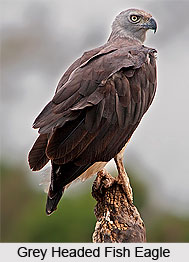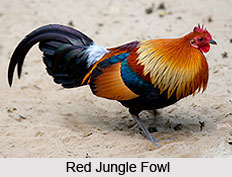 The Keibul Lamjao National Park is located in Manipur, a north eastern state of India. More specifically, this national park is situated in the district of Bishnupur. Keibul Lamjao has the distinction of being the only floating park in the world. Government of India and Government of Manipur are recognized as the managing body of this national park.
The Keibul Lamjao National Park is located in Manipur, a north eastern state of India. More specifically, this national park is situated in the district of Bishnupur. Keibul Lamjao has the distinction of being the only floating park in the world. Government of India and Government of Manipur are recognized as the managing body of this national park.
History of Khibul Lamjao National Park
Keibul Lamjao National Park was primarily declared a sanctuary in the year 1966 and secondarily declared a national park on 28th March, 1977, via a gazette notification. The act generated public awareness as well as support from the local people for the establishment of Keibul Lamjao. What compelled the declaration of Keibul Lamjao as a national park was the rediscovery of brow-antlered deer. The first discovery of brow-antlered deer was made in Manipur in the year 1839. This species was then named as Cervus eldi eldi in the year 1844 in honor of Lt. Percy Eld, a British officer. Unfortunately, in the year 1951, brow-antlered deer was declared an extinct species. A person named E.P.Gee re–discovered the brow-antlered deer in the Keibul Lamjao Park area. He is recognized as an environmentalist and a photographer. This incident gave impetus to the declaration of this reserve park area as a national park. The aim behind this step was the protection and conservation of the brow-antlered deer. It is also known as Eld`s deer`s subspecies and Sangai in Manipuri language. This deer has been given the status of being the "state animal of Manipur". It has occupied a prominent place in the folklore and culture of Manipur. The number of brow-antlered deer increased from a small herd of about 14 deer in the year 1975 to155 deer in the year 1995.
Geography of Khibul Lamjao National Park
Globally, Keibul Lamjao National Park can be pinpointed at coordinates 24 degrees 30 minutes 00 seconds north and 93 degrees 46 minutes 00 seconds east. This national park is spread over an area of about 40 square kilometers (15.4 sq mi). It is important to note that, while the park itself is predominantly owned by the state, the area on the periphery of the park is privately owned. The remaining areas are divided between the tribal groups of the Thang, Brel and Maril tribes. They claim to have ownership rights over the land occupied by them. As a result of the pressure imposed by the local villagers, the reserve area of the park was reduced from 4,000 ha (9,884.2 acres) in March, 1997 to 2,160 ha (5,337.5 acres) in April, 1988. The national park area experiences Indian tropical monsoon. During this season, the park receives an average annual rainfall of about 1,183 mm (46.6 in). The wettest months of the park are July and August, whereas the driest months of the park are February and March. Variance in temperature has been recorded in the park. A maximum temperature of about 34.4 degree Celsius (93.9 degree F) has been recorded in summer, whereas a minimum of about 1.7 degree Celsius (35.1 degree F) has been recorded in winter. Humidity is also a hydro–meteorological feature of the park area. This national park is an important part of the Loktak Lake. This park has a water way which can be accessed by boats plying through the Loktak Lake to the Pabot Hill in the north, throughout the year.
A very unique characteristic of the park is that it is too deep to be marsh and too shallow to be a lake.
This park is characteristically a swamp with floating mass of vegetation. The swamp occupies three hills namely, Pabot Hill, Toya Hill and Chingjao Hill that functions to provide a refuge to the large mammals during the monsoon season. The formation of the swamp is attributed to the accrual of organic garbage and biomass with soil particles that has been thickened into a solid form called phumdis. Phumdis are found in the south–eastern side of the Loktak Lake, which has been declared a Ramsar site. Phumdis have been estimated to occupy two third to three fourth of the total park area.
Flora of Khibul Lamjao National Park
Apart from the floating decomposed plant materials called phumdis, some of the aquatic floral species found in Khibul Lamjao National Park are Zizania Latifolia (wild rice), Saccharum Munja (khoimom), S. Bengalensis, Eiranthus Procerus (singnang), Dioscorea Bulbifera (phumha), Cynodon Dactylon (tinthou) and Alpinia Galanga (pullei).
Fauna of Khibul Lamjao National Park
Some of the mammals recorded in the Khibul Lamjao National Park are large Indian civet (Viverra Civetta, Viverricula Indica), common otter (Lutra Lutra), fox, jungle cat, golden cat and bay bamboo rat. Some of the fishes recorded in the park include channa striata, channa punctatus, cyprinus carpio and wallago attu. This national park is also a home to amphibians and reptiles.
Management of Khibul Lamjao National Park
Full-time forest officials have been appointed to monitor the Khibul Lamjao National Park area. To provide capacity building an assistant conservator of forests, an assistant veterinary surgeon, a ranger of forests, field assistant, three foresters, four forest guards have been appointed in the park.
Threats to Khibul Lamjao National Park
Deforestation and subsequent soil erosion in the catchment area, rotting vegetation, hazardous pollutants from the towns feeding the lake, use of agrochemicals for farming in the surrounding farm land and accumulation of water on phumdi have resulted in deteriorating water quality of the Khibul Lamjao National Park. The pH values of 4 to 8.5 testify to the poor quality of water in the park. This park is also threatened by the problem of permanent flooding.
Conservation of Khibul Lamjao National Park
To conserve Khibul Lamjao National Park, steps have been taken by the Forest Department of the Manipur Government. To tighten the security of the park, it has been provided with seven canoes and four checkpoints at strategic places. The park has also been provided with a cattle-proof trench along 870 m (2,854.3 ft) of its boundary. Census work in the park was implemented by an army helicopter. A perimeter fence of a length of about 2,281 m (7,483.6 ft) has been constructed in the most vulnerable sections of the park. It was done to prevent people and domestic livestock from entering the reserve.
Accommodation at Khibul Lamjao National Park
Basic accommodation in terms of a forest rest house without boarding facilities will be is available to the tourists inside the park on Phubala and Sendra Islands. Another alternative for accommodation is available to the visitors in Moirang town about 10 km (6.2 mi) away from the park. Imphal is known to have better hotel facilities. So Imphal is also a viable option for accommodation.
Visiting Information
Keibul Lamjao National Park has good transport availability. It can be reached by air, rail and road through Imphal, the capital of Manipur. Daily air services connect Imphal to major cities of the country such as Kolkata, Delhi, Guwahati and Mumbai. The nearest rail head to this national park is at Dimapur on the broad gauge line of the Northeast Frontier Railways. By road, this rail head is located at a distance of about 215 km (133.6 mi) from Imphal. Another alternative available to the visitors is Jiribam. Jiribam is a railhead on the Manipur border. This rail head is located at a distance of about 225 km (139.8 mi) from Imphal. By road, this national park is about 53 km (32.9 mi) from Imphal and about 522 km (324.4 mi) from Guwahati in Assam on the National Highway No. 53. These roads are motorable by public as well as private vehicles.
Related Links:
Indian National Parks
Indian Wildlife Sanctuaries
Indian Flora and Fauna
Indian Wildlife
Bird Sanctuaries in India
Indian Biosphere Reserves



















